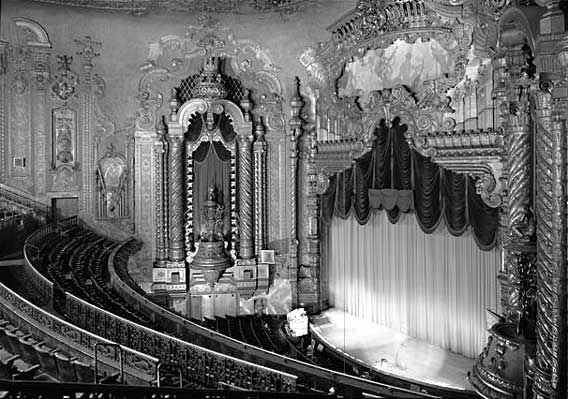
The Super Foxes & Their Brethren

By Hal Doby
Originally Written in 2005, Last Revised February 1, 2013
In 1904, William Fox took a $1,600 investment, purchased a run-down Brooklyn Nickelodeon, and by every definition of the word, turned it into a true empire worth over $400,000,000. Before his empire began to crumble at the end of 1929, Fox-Metropolitan Playhouse division of the Fox Films Corporation was composed of over 1100 movie houses. Of all those theaters, the last five constructed stood out as some of the most incredible movie palaces ever created; The Detroit, St. Louis, Brooklyn, San Francisco, and Atlanta Fox Theatres. Today, we are most fortunate that three of these four movie palaces still survive.
As I have described in other sections of this web site, all of the grand movie palaces were built in downtown districts that over the course of the second-half of the 20th Century, fell out of favor with the movie-going public. The mass populace that once lived in the big cities migrated to the rural life of suburbia. They preferred the convenience of the neighborhood cinema when they went out to see a movie and would only rarely travel to the downtown districts for entertainment. The theaters in the downtown districts across the country lost the majority of their patrons and one by one, they began to be shuttered. The palaces often sat on valuable real estate and most were sold off so they could be torn down and the property re-purposed.
While we have lost some other true treasures such as the Paradise, the Michigan, and the great New York City Roxy theaters, we are incredibly lucky that of the five grand Fox theatres, we have only lost two. While the San Francisco Fox was lost in 1963 and the Brooklyn was razed in 1970, the Detroit, St. Louis, and Atlanta Fox Theatres all have managed to go through their dark days and are now enjoying a true renaissance.
So what makes a Fox Theatre a Super-Fox? Since initially writing this page, I've received email about other Fox Theaters that people felt should be included in this list. In order to claim any type of status, one must set a certain standard to gauge everything by. From looking at what made the acknowledged Super Foxes "Super", I feel there are three qualifications fpr a theater to join to this exclusive group: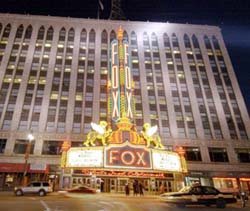 Detroit
Fox Theatre
Detroit
Fox Theatre2211 Woodward Avenue, Detroit, MI 48201
Opened September 21, 1928
Seating Capacity: 5,000
Architect C. Howard Crane employed a combination of Asian ideas,
dominantly featuring Burmese, Hindu, Persian and Chinese architectural
styles into the Detroit Fox. Construction cost $12 million and
took more than one year with the completion in 1928. At its height,
the auditorium is 105' in height, featuring a motif of Asian,
incorporating salient features of Hindu, Persian and Chinese
architecture,
which have been blended into a 1920's modernistic adaptation.
The Auditorium Chandelier is 13 feet in diameter; weighs two tons;
features 200 light bulbs and contains more than 1,240 pieces of
stained glass. The Grand Lobby is 87' long and six stories high.
The Stage is 130' wide with a 77'9" proscenium arch. Backstage,
there are 8 floors that house 21 dressing rooms of varying size.
The Projection Room, one of the largest in the world, features
both 35 and 70 mm film capabilities, stereo sound and three spotlights.
The Detroit Fox was the first movie theatre in the world built
with sound equipment for talking pictures incorporated into the
design. There are two organs: The auditorium organ is a 36 rank
Wurlitzer pipe organ containing more than 2,500 pipes. Entertaining
patrons as they enter the Grand Lobby is a smaller 12 rank Möller
pipe organ.
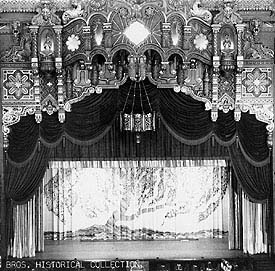

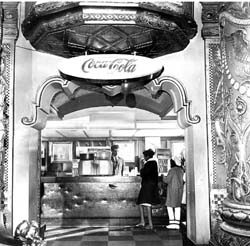
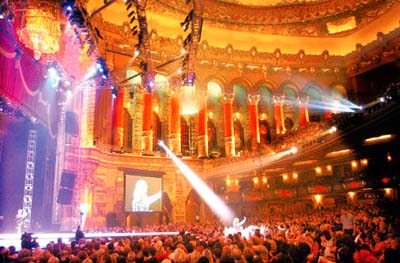
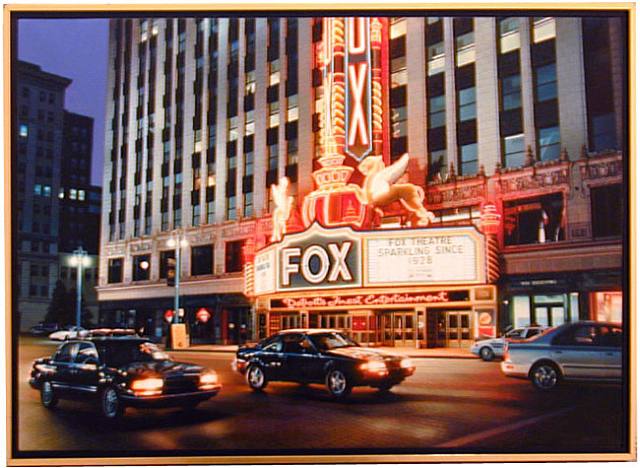
The restoration that started in 1987 took approximately one year, and cost approximately $12 million, the same amount it originally cost to build the theatre. In 1997, the Fox added a $200,000 scenery dock to house The Radio City Christmas Spectacular and other larger shows.
Note: On December 1, 2004 The Detroit Fox suffered an electrical fire that caused damage to its grand marque. Fortunately, the building suffered little or no damage.
The Detroit Fox is privately owned by Michael & Marian Ilitch.
 St.
Louis Fox Theatre
St.
Louis Fox Theatre527 N. Grand Blvd, St. Louis, MO, 63103
Opened January 31, 1929
Seating Capacity: Originally 5,060, Today 4,500
The Fox Theatre opened in 1929 as one of the crown jewels in William
Fox's motion picture empire. C. Howard Crane, one of the most
distinguished movie palace architects of the era, designed the
Fox at a cost of six million dollars. With a seating capacity
of 5060, the Fox was second in size only to New York's Roxy Theatre.
The Fox was justifiably billed as "St. Louis' largest and most magnificent temple of amusement." It is legend that Fox's wife, Eve Leo Fox, filled the theatre with paintings, sculptures and furnishings gathered from her travels around the world for the astronomical sum of $700,000. (Webmaster's note: From what I've learned about the Atlanta Fox Theatre, this is highly dubious and nothing more than propaganda generated by the Fox publicity machine.) For 35 to 65 cents (depending on the time of day) a visitor could buy an entire afternoon or evening in the company of the Fox's own elephants, lions, monkeys, peacocks, and dolphins. Fierce rajahs armed with wicked, curving scimitars glare down from their niches in the lobby. Indian Vishnu's meditate on either side of the stage. From the dome in the auditorium hangs a fantastic 2,000-pound chandelier, 12 feet in diameter and glittering with 2,264 pieces of jeweled glass. And, to find a resting place, one couldn't ask for a better vantage point than one of the many gilded velvet throne chairs adorning the lobbies.

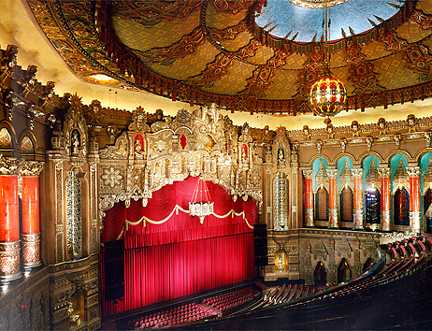
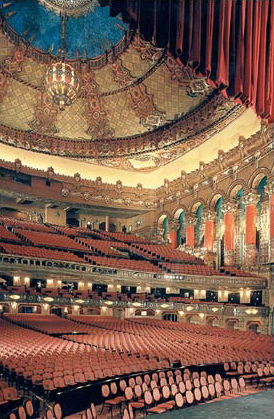
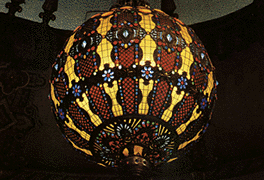
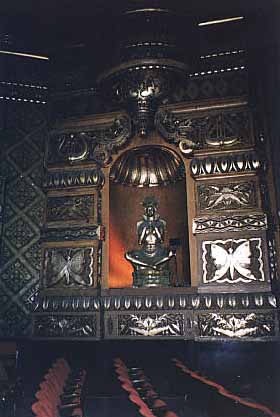


In 1981 an incredible restoration project was launched. With scrupulous attention to detail, thousands of square feet of ornate plaster were recreated: long-lost art glass was beautifully duplicated; 4,500 seats were completely re-upholstered and restored; 7,300 yards of carpet were woven in the original elephant pattern; even the 106 foot high ceiling was meticulously vacuumed. The awesome chandelier was restored to its original brilliance, and the majestic Wurlitzer organ rebuilt to perform its rapturous melodies. Also undertaken was the additional task of updating and installing state-of-the-art sound, lighting and stage equipment to handle a wide range of contemporary entertainment. All this and more was accomplished at an expense in excess of $2 million and within a single year!
The St. Louis Fox is privately owned by Fox Associates, which is composed of Leon Strauss, Robert Baudendistel, Dennis McDaniel and Harvey Harris.
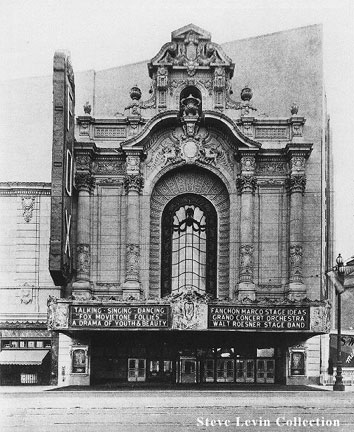 San
Francisco Fox Theatre
San
Francisco Fox TheatreOpened June 28, 1929
Closed February 16, 1963
Razed: 1963
Seating Capacity: 4651
Like other Fox Theatres, the San Francisco Fox was called "The
Last Word", but for this Super Fox, the term carried
extra meaning. The Fox Theatre in San Francisco opened in 1929
as one of the grandest theatres ever built for the showing of
motion pictures. The Fox was meant to be a part of a large office
complex, which was never finished. The San Francisco Fox Theatre
was perhaps the greatest of all movie palaces. Never the largest,
nor, in a few places, the best detailed, it nonetheless stood
unrivaled for its overall blend of size, grace, and elegance.
Thomas W. Lamb designed and appointed the Fox. Everything that Lamb had learned previously from designing other movie palaces went into the San Francisco Fox. Unashamedly Baroque in almost every aspect, the Fox also anticipated the coming of Art Deco in such details as light fixtures and the balcony cosmetic room. A minor disappointment was the treatment of the lobby and auditorium ceilings: intricate stencil work replaced the coffering initially proposed. William Fox made sure his wife, Eve Leo Fox, was kept at arms length away from the project. Mrs. Fox considered herself to be an interior decorator and she had insisted on being allowed to personally oversee the decoration and appointments of the other three "Super Foxes" built during that period. With her work on the Detroit, St. Louis, and Atlanta Foxes, she was kept too busy to oversee the appointment of the San Francisco Fox.
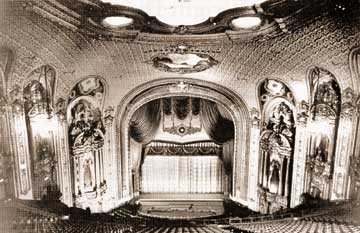
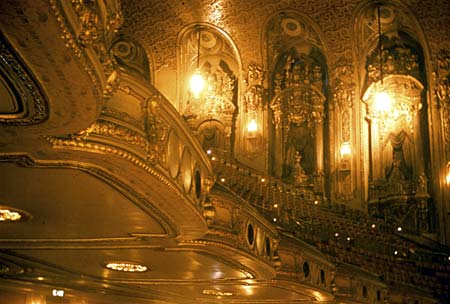
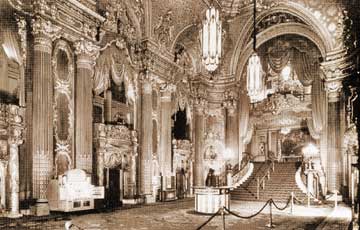
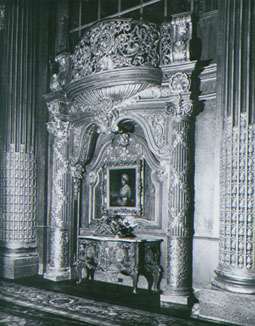
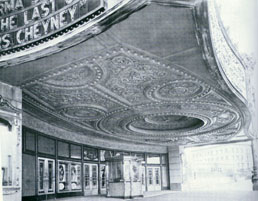
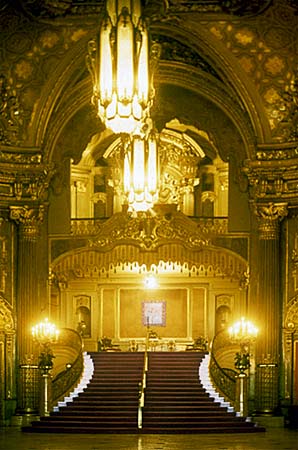

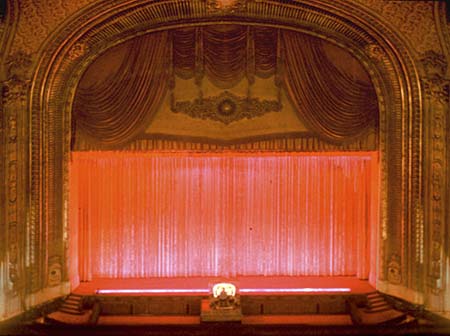
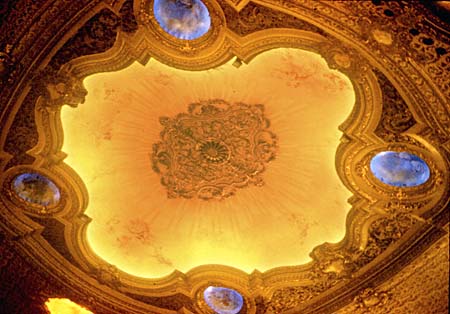
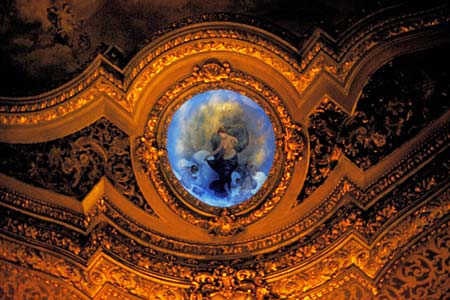
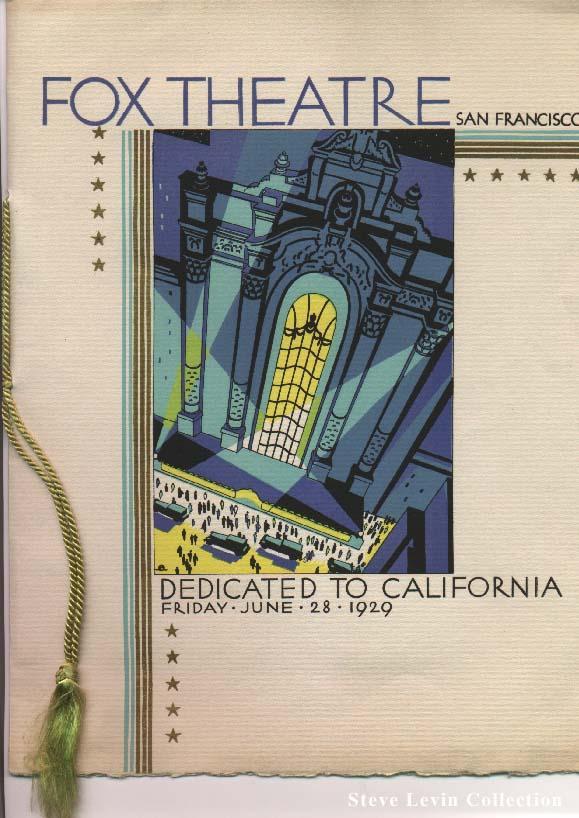
The Fox was San Francisco's last major movie house. More than half again as large as anything else on Market Street, and three long blocks from the hub of the movie house district, the Fox was not always a spectacular money maker, but neither was it, as too often pictured, a white elephant. Nevertheless, by the late 50s, its mighty overhead and shrinking revenues were converging perilously. When neither the city government nor the voters could imagine the big house as a performing arts or convention facility (an idea but half a decade ahead of its time), the Fox was doomed. A memorable benefit show closed the house on February 16, 1963. By late summer it was gone, eventually replaced by a common and bland combination office & apartment tower. The San Francisco Fox existed for a mere 34 years. Before demolition, the interior furnishings and decorations were auctioned off. I am told the Wurlizter pipe organ was removed and later installed in the El Capitain Theatre, also in California.
In an historical note, in designing the Los Angeles Theatre, S. Charles Lee apparently copied the Fox in 1932. The Los Angeles looks much like the Fox, just on a smaller scale.
 Atlanta
Fox Theatre
Atlanta
Fox Theatre600 Peachtree Street, Atlanta, Georgia 30303
Opened December 25,1929
Seating Capacity: 4,518
(Webmaster's note: Since this is my tribute
site to the Atlanta Fox, I felt I needed to put something here,
so this is a very concise history of the building. To learn more
about the Atlanta Fox Theatre, see the other pages of this site.)
The Atlanta Fox is a Movie Palace that was not meant to be one. Designed by Olliver J. Vinour and P. Thornton Marye, the Yaarab Temple's Shrine Mosque was to "Out Baghdad Baghdad" with its opulent Arabic and Moorish design. Prior to the start of construction in 1928, Fox Films Corporation signed a 21-year lease to use the mosque's civic auditorium as a movie theater. The lease was used to acquire a loan from Trust Company of Georgia to provide funds to complete the building project. (The project was totally funded by the Shriners; Fox Films did not provide any financial help.)
The Atlanta Fox Theatre opened Christmas Day 1929 and was the last great Fox Theatre movie palace. Thanks to the Great Depression, Fox Films ceased to operate the Atlanta Fox in August of 1930 and its operation was taken over by Loew's Incorporated. The Shriner's organization was financially crippled by the Depression and after it could not pay its mortgage, the Atlanta Fox closed its doors in 1932 after 125 weeks of operation in anticipation of its impending foreclosure. The Atlanta Fox went through a tumultuous period until 1936 when it became the property of Mosque, Inc. During its life between 1929 and 1975, the Fox operated as a movie house with occasional live performances. In 1974, Mosque entered into an agreement to sell the Fox to Bell Telephone for its Southern Bell Division with the express purpose of it being razed. The citizens of Atlanta protested their beloved Fox's impending fate and through the support of the Atlanta City government, a plan was conceived to save the Fox. Atlanta Landmarks, a non-profit organization, was formed and through a complex loan arrangement and property swap, the Fox was spared from the wrecking ball. The Fox quickly reopened in October of 1975 as a omnibus performing arts theater. In 1978, the Fox's mortgage was paid off and the building was declared officially "saved".
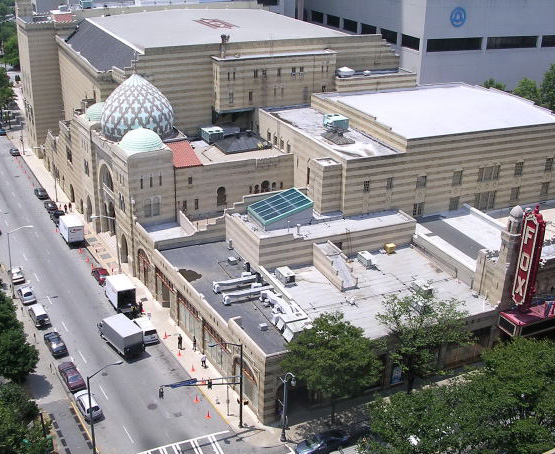
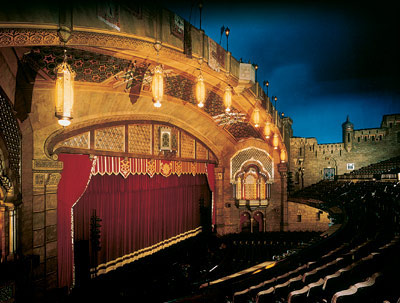
The Atlanta Fox Theatre is owned by Atlanta Landmarks, a non-profit organization specifically created to save, preserve, restore, and operate the Atlanta Fox. While its charter leaves open the organization's "mission" to save other landmarks in the Atlanta area, Atlanta Landmarks' only interest is the Fox.
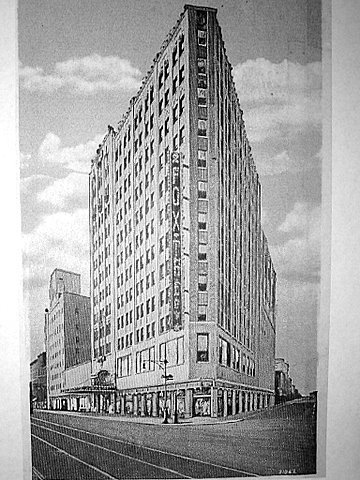 Brooklyn Fox Theatre
Brooklyn Fox Theatre
Seating Capacity: 4,305
Opened: August 21, 1928
Shuttered: 1968
Status: Razed/Demolished 1970-1971
The Brooklyn Fox resided at
In addition to the operating the theater, Fox also operated
an AM radio station from the
On the 8th Floor, William Fox himself resided in
his own luxury apartment. From what can be found in the information I have
found, Mr. Fox maintained his residence at the Brooklyn Fox from 1928 until
probably 1930-1932 after he lost control of the Fox Movie Studios Empire. In
1934, Fox's apartment was renovated and was used as offices and studios for the
AM radio station WBNY. It would be logical to conclude that this was used in
addition to the already existing offices and studios that were in place for the
then-defunct WFOX radio station.
The Fox Theater was once a centerpiece of "Downtown Brooklyn". The
architect was C Howard Crane who also designed the Fox theaters in

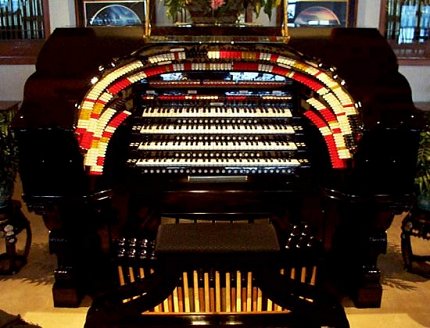

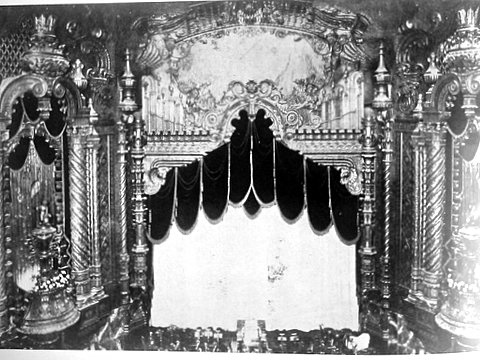

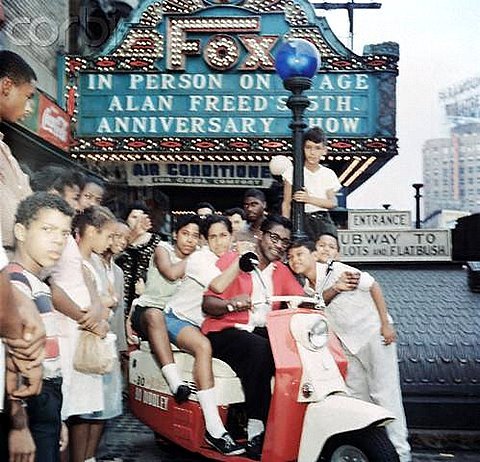
There was one item in the Brooklyn Fox that was similar to
the
While today, we wax romantically on about the greatness of
the grand movie palaces of days gone by, the Brooklyn Fox is remembered the
most as a concert venue for Rock 'n Roll shows in the 50s and 60s during the
darkest days for the movie palaces. While most grand movie palaces were being
shuttered; then razed, the Brooklyn Fox thrived and actually prospered by
becoming the
There were about four to five shows per year during that 13
year period. The engagements in the earlier days lasted 10 days. 12 to 15 acts
performed 5 times a day for 10 days. On occasion, some of the performers would
be rotated in and out during engagements, thus promoting patrons to come back
and see the show twice. The grosses for these 10 day engagements reached a
staggering $180,000, crushing even the best of Broadway grosses of the day. Compared
to the grosses of motion picture engagements of the same era never grossed more
than $30,000-$40,000 a week, one can easily see why the management of the
Brooklyn Fox was so eager to stage the Rock ‘n Roll shows instead of movies.
Using what evidence I have found on the Brooklyn Fox and
combining that with the information I have learned from reconstructing the
history of the Atlanta Fox, I believe the Brooklyn Fox was operated by Fox
Theatres from its opening in 1928 until the fall of 1930 when Fox turned over
its theater operations to Loew’s Inc. From 1934 to 1966 the Brooklyn Fox was
leased to Fabian Theatres. (Historical Note: The Fabian Theatres movie house
chain was operated by Jacob Fabian and his sons. Fabian, not related to the
pop-teen star Fabian of the 1950s and 60s, had the distinction of building the
first motion picture palace in the
The Fox ended its run as a movie house on Sunday, February
6, 1966 with the last showing of "Where The Spies Are", but the rock
concerts continued on for over two more years until they came to an end in
April of 1968. It was next used by the Salmaggi Grand Opera Company for a few
months. The last time the auditorium was used in the theater was for a Hubert Humphrey
for President Rally in 1968 before it was permanently shuttered. The building then
sat vacant for approximately two years before it was razed.
The last owner of the theater was the Barton Candy Company being
purchased by the Borough of Brooklyn, in NYC. The Brooklyn Fox sustained a fire
before it was demolished shortly after the filming of the George C.
Scott/Joanne Woodward film "THEY MIGHT BE GIANTS”. Demolition took place starting
on November 7, 1970 and concluded January 4, 1971. The offices of The
Consolidated Edison Company of

